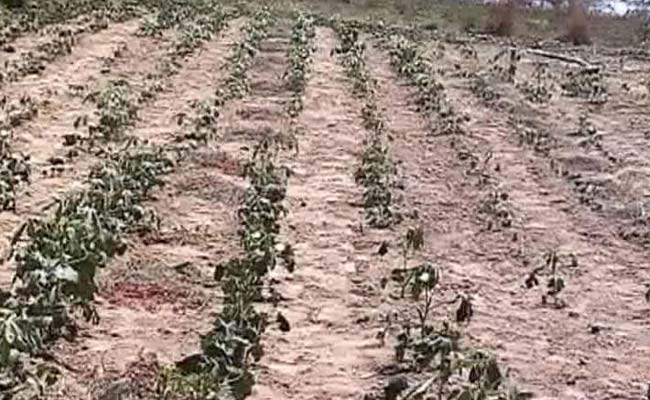What Does It Mean To Be A Farmer In Vidarbha?
By Shubhda Chaudhary
30 January, 2016
Countercurrents.org

A comprehensive study of the National Crimes Record Bureau had revealed that one-and-a-half lakh farmer suicides took place in Vidarbha from 1997-2005. Few of the worst affected districts include Yavatmal and Amravati. This disconnect does not allow us to delve deeper, to ask questions as to why the ‘Cotton belt of the Deccan’ suffers. So, what does it mean to be a farmer in Vidarbha?
Vidarbha, located in the eastern region of Maharashtra has constantly called for attention due to the rising number of farmer suicides. In tandem, the government is trying to scrutinise the causes that are leading to this affliction, though, without understanding the loopholes that continue to mar the relief packages, introduced time and again by them. Though, relief packages are being distributed but one is hardly questioning why the farmers are unable to repay the loan, what are the reasons that are contributing to this phenomenon and at what level, are farmers’ still falling prey of it, in spite of the relief packages amounting to crores. At the same time, this agrarian crisis of farmers suicides which became even more prominent after 2000, have underlying root causes that date back to several decades, rather than being an immediate consequence of an embryonic malady.
There are several reasons behind the dramatic rise in the number of farmer suicides, the prime being the case of rapid rise in farmer’s indebtedness. This agrarian crisis further worsens due to the poor pricing of cotton produced along with crop failure. One needs to understand that most of the cotton farmers are small farmers and since the very colonial times, they have been very sensitive to the price fluctuations in the market. When the prices of cotton were improved in 1990s as the Indian economy opened up to trade liberalisation, the number of cotton farmers also grew. But then, the domestic market of cotton farmers in India was destroyed when the government started permitting imports of cotton from USA at five per cent duty only. As a result of the government lifting the quantitative restrictions under liberalisation scheme, the cotton imports from USA increased from 21,221 tonnes in 1999 to 48,805 tonnes in 2000. This step quintessentially was going to affect the domestic cotton farmers in India in the years to come. But the measure of its affliction was perhaps ignored or not thought about, to this degree as it is now.
The fact that BT cotton leads to greater yield can be debated because greater yield of cotton is due to increase in the area under cotton production. Also, the increase in yield is due to several factors such as soil quality, water, nutrition and climate rather than just the use of BT cotton. But the farmer indebtedness has increased as BT Cotton seeds are the only ones available in the market. They are herbicide resistant and have toxin producing gene. Paradoxically, a large number of farmers are committing suicides by consuming pesticides. At the same time, scholars like Vijay Jawandhia argue that yield is not the problem at all, as the problem primarily consists of problems of food storage and loopholes in food distribution system. Thus, rather than involving middle-men or farmer leaders or foreign giants, the government should take steps on improving food processing facilities at the village level so that the cotton farmers do not have the only option of shifting to soya farming, which would have detrimental impact in the coming decades as our cotton production would then drastically reduce.
Nevertheless, Vidarbha region in Maharashtra still receives a great deal of attention and coverage by the press on this issue. Consequently even if the governments in these states have been forced to acknowledge the problem and are forced to take some steps to mitigate the crisis, they have not been flawless. In fact, they have been quite flawed, right from the very start, be it the designing or the thought implementation of the relief packages.
In a nutshell, would this semi-arid, poor, backward region in the heartland of India where the problems of farm suicides – in terms number, rate, intensity and trend – would ever stop becoming such an acute and worrisome fact? Is the farmer himself, who now needs to take on the mantle and narrate the stories, rather than drinking pesticides and waiting for relief packages? Or would the same top to bottom approach of the government would suffice, one day, no matter, when that one day comes. Well, when it comes to Vidarbha, there are many questions that haunt us today and would continue to do so, in the times to come.
Shubhda Chaudhary is a PhD scholar in International Relations at Jawaharlal Nehru University. She specialises in West Asian politics and works with think-tanks in Abu Dhabi and South Africa. Email id: [email protected]

